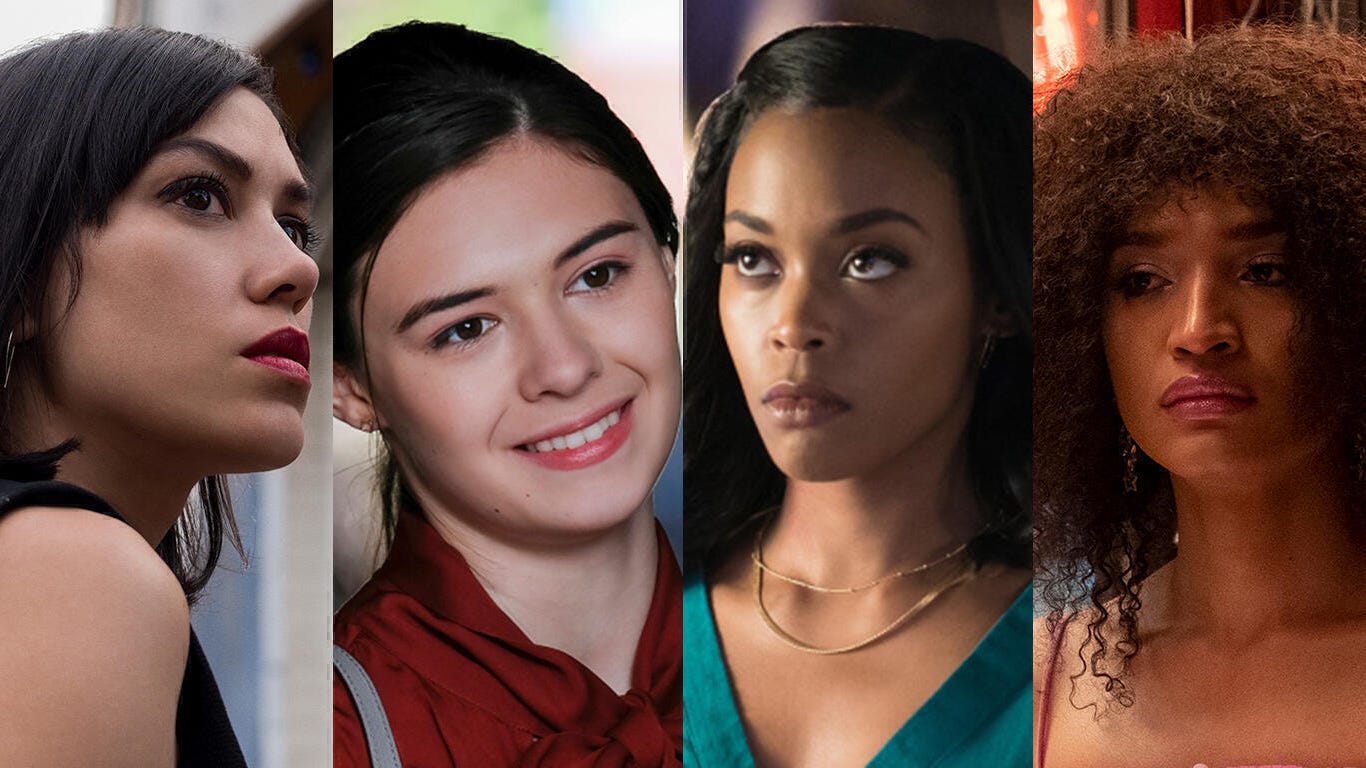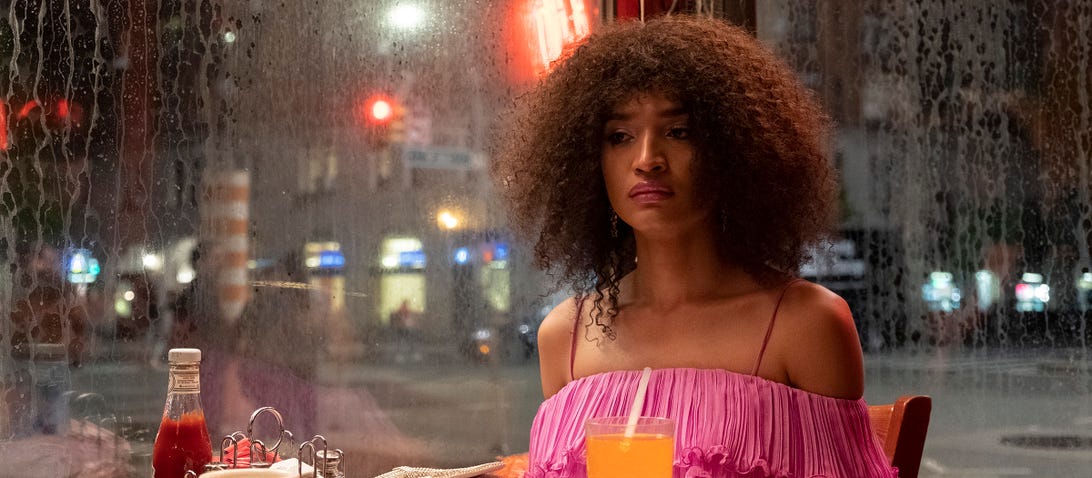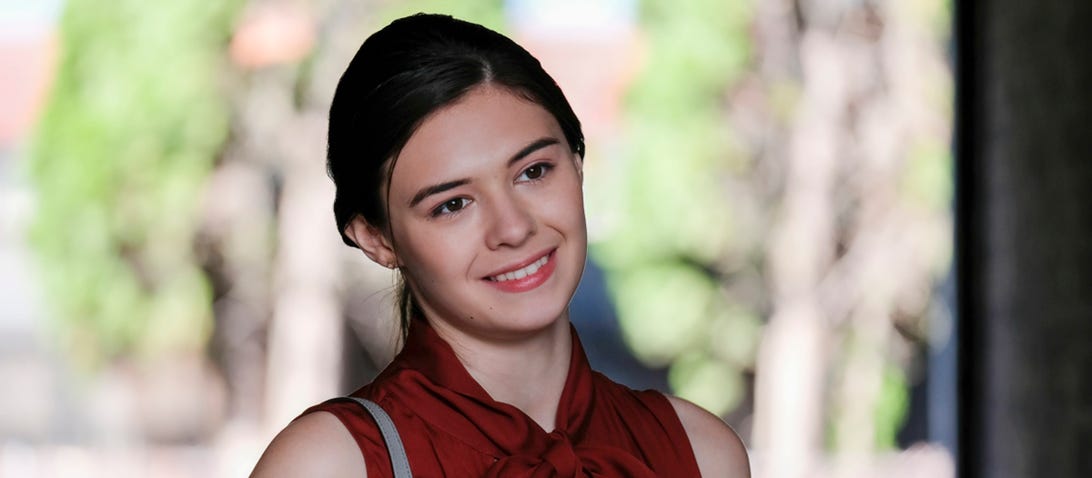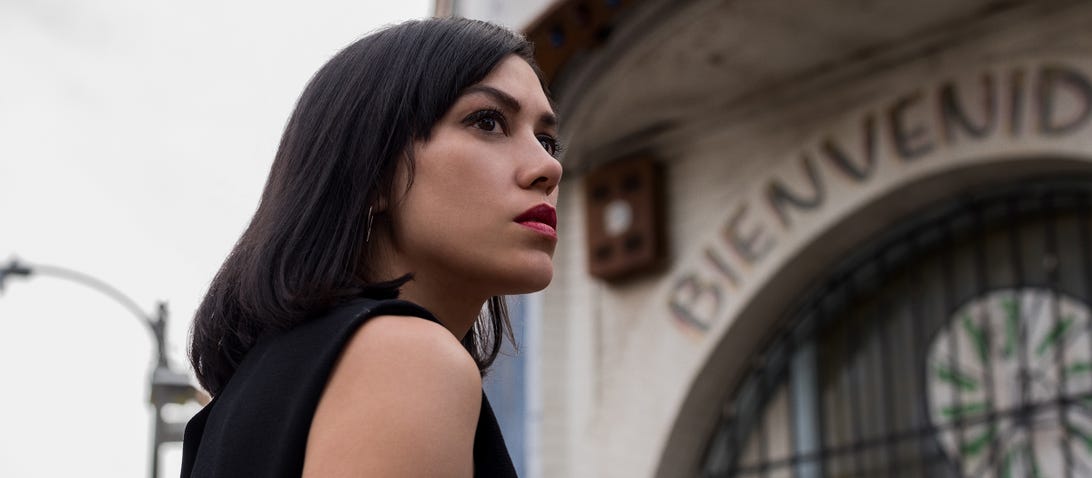
In 2018, TV Became a Respite From Reality With Diverse LGBTQ Storytelling
How 'Pose', 'Supergirl', 'Black Lightning', and 'Vida' carved out spaces on TV where LGBTQ voices could thrive.
The real world has been a terrifying place for LGBTQ people in 2018. From President Donald Trump's transphobic memo to news about the lack of questions about gender identity and sexuality planned for the 2020 U.S. census, LGBTQ Americans are living under an administration set out to erase them. But as reality became a daily nightmare this year, the small screen became a landscape where groundbreaking queer and trans storytelling could flourish.
GLAAD's annual study of LGBTQ representation on TV proves the 2018-2019 season was the best yet for diverse queer and trans characters. This year featured a record high of LGBTQ series regulars -- 75 characters up from last season's 58. There were more regular and recurring trans roles than ever before, and LGBTQ characters of color outweighed their white counterparts. Numbers only tell part of the story though. Standout shows like Pose, Supergirl, Black Lightning, and Vida didn't just introduce more queer and trans voices this year, but told their stories with refreshing depth and complexity.
One of the most powerful moments on TV this year featured two women chatting in a diner. In the sixth episode of Ryan Murphy and Steven Canals' Pose, Indya Moore's Angel sits across from the wife of the man she loves, Kate Mara's Patty. The two may share heartbreak over the same man, but they come from wildly different worlds -- one is a white, middle-class New Jersey housewife; the other is a Puerto Rican trans woman who supports herself through sex work. When Angel discloses her trans identity, Patty presses Angel to "prove it" by showing her what's between her legs. "Everything I can't have in this world is because of that thing down there," Angel says. "If you want to see who I am, that's the last place you should look."

Indya Moore, Pose
JoJo Whilden/FXThat's a radical scene not only because pop culture has historically regarded trans bodies with shame and rejection, but for how important it was to watch in 2018. This year, the White House proposed to erase the existence of trans people with a potential law aiming to redefine gender based on genitalia assigned at birth and genetic testing. Trans people also continued to fight for their right to serve in the military and during the midterm election, trans rights were up for debate in a significant Massachusetts proposition. Watching a scene co-written and directed by a trans woman, Janet Mock, where a trans character -- played by Moore, an actor of trans experience -- refuses to be defined by her body felt nothing short of revolutionary.
That scene, like much of Pose, is groundbreaking because the FX drama allowed queer and trans people of color to tell their own stories. The series about ballroom culture in 1980s New York features five trans actresses of color as series regulars -- a first in broadcast TV history -- and over 100 trans and gender nonconforming cast and crew members, including writers like Mock and Our Lady J, and director Silas Howard. Pose brings layers of authenticity and humanity to a community that's been mistreated on screen for decades in stories that challenge harmful stereotypes about sex workers, celebrate chosen queer family, and shine a light on the devastating realities of the HIV/AIDS epidemic. Pose created a space where the most underrepresented members of the LGBTQ community could be portrayed as dynamic characters beyond the tragedies and clichés that have long defined their stories on screen.
Pose was not alone in making history for trans visibility this year, either. In its fourth season premiere, Supergirl introduced TV's first trans superhero with Nia Nal, aka Dreamer. The best surprise wasn't just that The CW smartly cast Nicole Maines, a trans actress and activist, but how the show portrayed Nia as so much more than her gender identity. When Nia is first introduced as a nervous, ambitious cub reporter at CatCo, one of the first things Kara (Melissa Benoist) says is how much the new girl reminds Kara of herself. "You're me!" she remarks. How wonderful to show viewers that a trans woman like Nia -- who isn't identified as such until the second episode -- is no different from any other woman, even the woman behind Supergirl.

Nicole Maines, Supergirl
Robert Falconer/The CWWhen Nia's trans identity is first mentioned, the show thoughtfully allows Nia to disclose it on her own terms. The scene doesn't feel overly expository or forced, but naturally fits into the season's ongoing narrative about alien rights and discrimination. "I know what it's like to be attacked and denied because of who I am," Maines tells CatCo's James Olsen (Mehcad Brooks) after she prevents a bigot from attacking Brainy when his alien identity is exposed -- a moment that serves as a meta-commentary on the violence trans people face when outed. It's heartening to imagine a trans girl watching Maines' Nia and see that it's possible for a trans woman to act on TV as both a successful reporter and a trans superhero.
While Nia became the first trans caped crusader this fall, another CW series introduced TV's first black lesbian superhero earlier this year. Like Supergirl, Black Lightning naturally embedded a LGBTQ character's identity into the fabric of the series with Nafessa Williams' Anissa Pierce, aka Thunder. Anissa is a medical student and teacher, she's an activist, she's the bulletproof superhero and she's openly queer. The first time her romantic life is shown is an early scene in Season 1 where Anissa passionately rolls around in bed with her then-girlfriend Chenoa (Shein Mompremier) after sex. Instead of shooting the sequence with a leering voyeurism, as has been the case with many sex scenes between queer women on TV and film, there's a sweet intimacy to Anissa and Chenoa kissing and giggling in bed.

Chantal Thuy and Nafessa Williams, Black Lightning
Bob Mahoney/The CWWhat's especially remarkable about Anissa's sexuality is how normal it is -- something that, in itself, shouldn't have to be commendable on TV. There's no coming out scene or discomfort from her parents or community; she's simply accepted for who she is. And unlike so many queer narratives that emphasize the struggle with self-acceptance, we meet Anissa as a woman who's fully comfortable in her queerness. That's on full display in Season 2 when Anissa waltzes up to a singing babe at a party and suavely hits on her. Black Lightning presents a portrait of a queer black woman who's unabashedly confident in her sexuality, and who also happens to be a badass superhero.
Queer female sexuality got explored in even more fascinating ways on Starz's Vida. The series follows two Latinx sisters when they return home to East L.A. after the death of their mother, and their homecoming is used to interrogate homophobia, shame and the lasting effects generational bias can have on a family. Upon returning home, Mishel Prada's Emma is forced to wrestle with the realization that her late mother, who disowned Emma for being queer, was a lesbian herself and married to a woman.

Mishel Prada, Vida
Erica Parise/StarzBut it's not until the third episode, which opens with one of the best -- and hottest -- queer sex scenes in recent memory, that we learn Emma is a lesbian. She moans in pleasure while her toes get sucked by Sam, a nonbinary character played by queer writer Michelle Badillo. Emma then aggressively shoves Sam onto the floor to sit on their face. Watching brown queer folks have sex on screen is unfortunately a rarity, and especially in a realistic depiction of what sex between a queer femme top and gender nonconforming bottom can look like.
Much like Pose, Vida is a show about a community made by its community. Showrunner Tanya Saracho hired TV's first all-Latinx writers room, which included queer perspectives, brought on celebrated queer director Rose Troche (who also worked on Black Lightning), and cast multiple queer and non-cis actors, including nonbinary performer Ser Anzoategui and queer two-spirit actor Adelina Anthony. Even the sets are littered with artwork by real-life queer Latinx artists. The refreshing authenticity of Vida's world, from its depictions of queerness to the rich specificity of Latinx culture, was only possible by Saracho investing in diversity on and off screen. Vida may not have gotten as much attention as it deserved this year, but as one of the best new shows of 2018, it sets a high bar for narratives about the intersections of LGBTQ and Latinx identity.
These shows may not have always directly engaged with the politics of our present moment, but they served as a restorative balm and joyous relief from the anxieties of 2018. Pose, Supergirl, Black Lightning, and Vida carved out spaces on TV where LGBTQ voices could thrive. This year nonbinary and femme queer bodies got to have mind-blowing sex, trans women got to take home magnificent trophies, a young trans reporter helped capture a xenophobic terrorist, and a black lesbian juggled one-night stands with crime-fighting. The world outside our screens may be a continually frightening one to be in, but at least for a few hours this year, TV offered a glimpse at the beautiful complexity of living, loving, and simply moving through the world as an LGBTQ person.
(Full disclosure: TV Guide is owned by CBS, one of The CW's parent companies.)